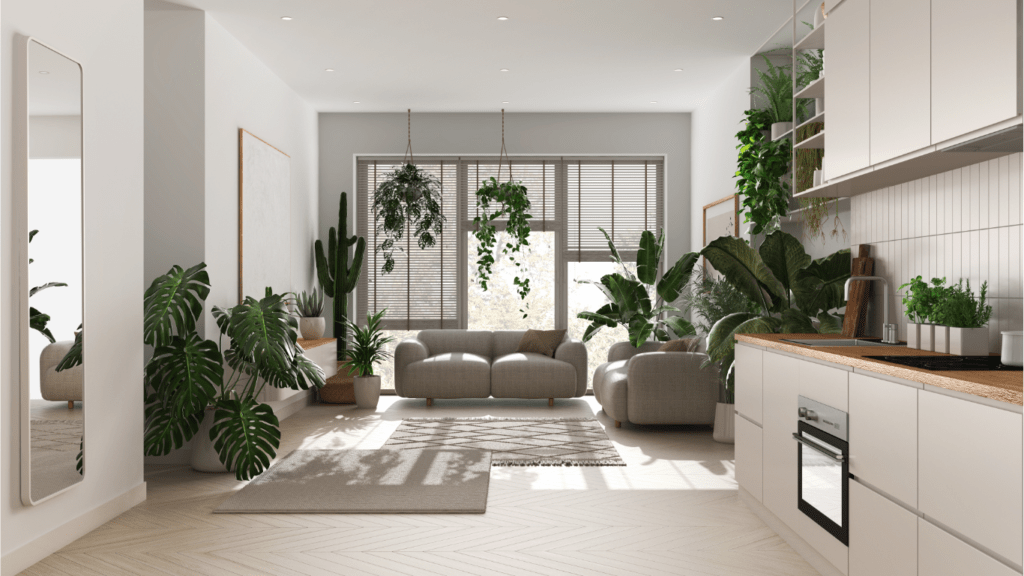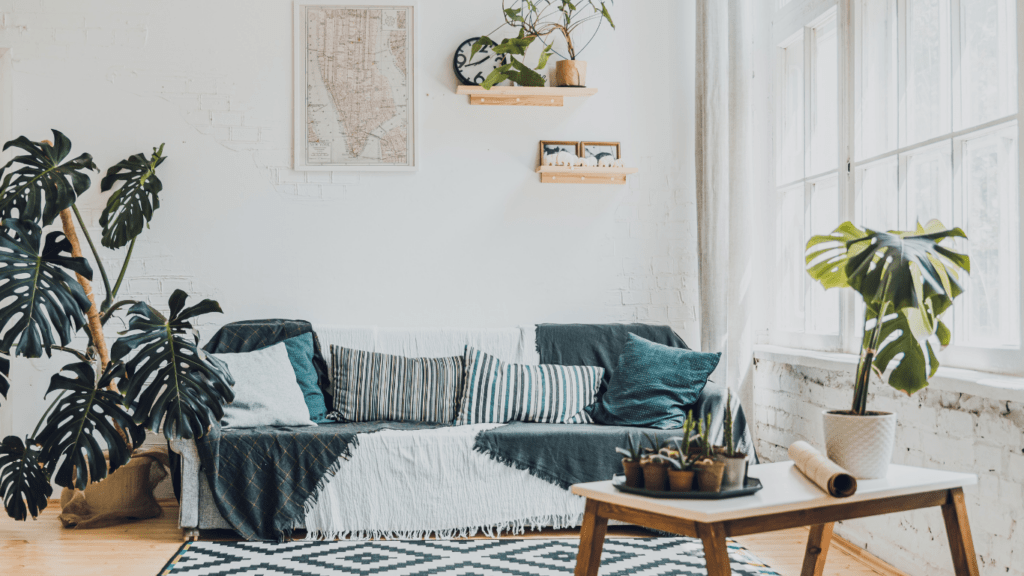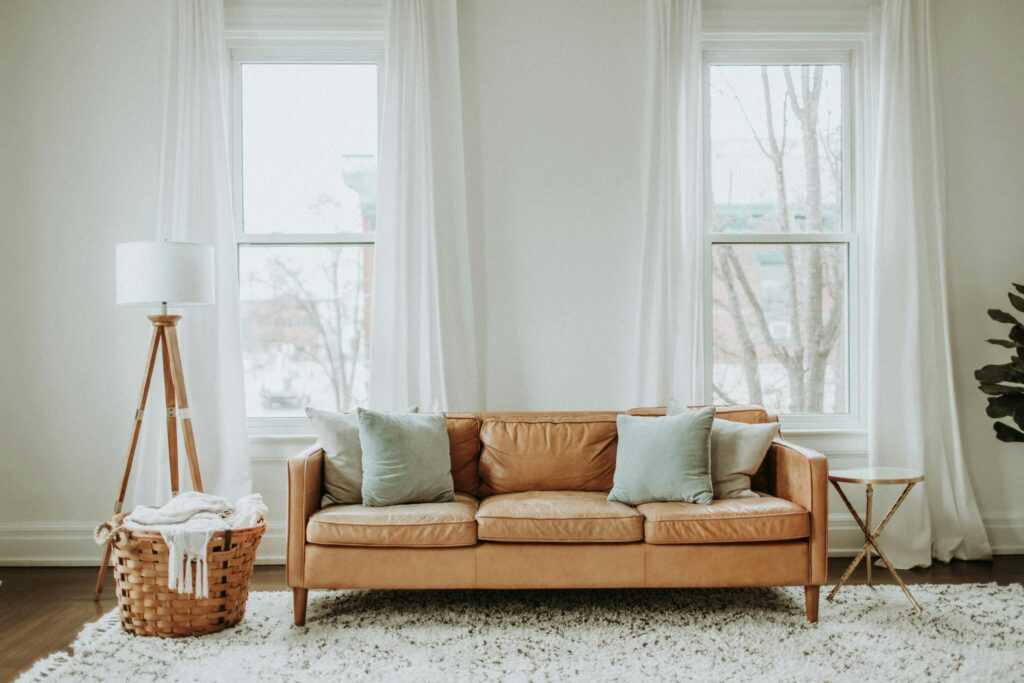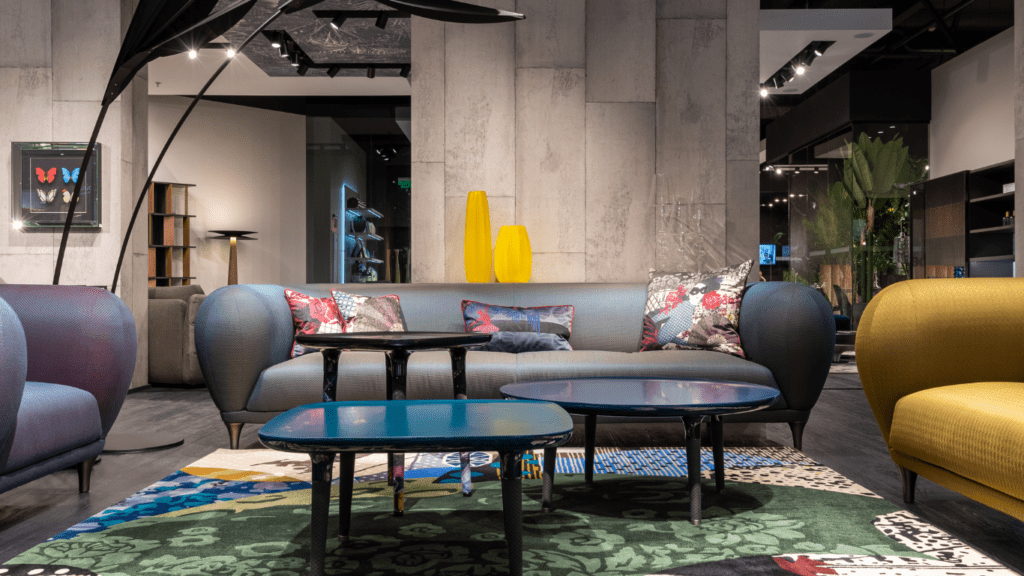What Is Biophilic Design?
Biophilic design integrates nature into built environments to foster well-being. It’s more than just adding a few plants; it encompasses nature’s patterns, materials, and lighting. Derived from the term “biophilia,” which means love for nature, the concept emphasizes the human-nature connection.
Three core principles define biophilic design.
- First, direct experiences of nature, like having indoor plants, water features, or natural light access.
- Second, indirect experiences, such as using natural materials (wood, stone), colors, and imitating natural shapes.
- Third, spatial elements, which means designing spaces for comfort and movement, like open floor plans and views of the outdoors.
Biophilic design aims to create environments that reduce stress and enhance creativity. In homes, this means spaces where natural elements blend seamlessly with daily life. For instance, incorporating large windows for natural light or using wood and stone in decor. This approach makes it possible to create a home that feels harmonious and rejuvenating.
Benefits Of Biophilic Design In Your Home
Biophilic design offers numerous benefits, transforming homes into spaces of well-being and productivity. Below, I discuss some key advantages:
Enhanced Well-being
Biophilic design significantly enhances well-being by reducing stress and boosting mood. Exposure to natural elements like plants and sunlight stimulates the production of serotonin, the happiness hormone. Integrating elements such as indoor gardens, water features, and natural textures can create more serene and enjoyable living environments.
Improved Air Quality
Indoor plants are a vital component of biophilic design and notably improve air quality. Plants like spider plants, snake plants, and peace lilies filter pollutants like formaldehyde and benzene, purifying the air. Better air quality can reduce respiratory issues and promote overall health, making homes healthier places to live.
Increased Productivity
Biophilic design increases productivity by creating more stimulating and engaging environments. Natural light and views of greenery have proven to enhance focus and cognitive function. Studies have shown that employees working in biophilic-designed offices are more productive and have higher job satisfaction, and similar benefits can be achieved at home.
By integrating biophilic principles, homes can become havens of well-being, cleaner air, and heightened productivity.
Key Elements Of Biophilic Design
Biophilic design unleashes nature’s restorative power within our homes. Here are the core elements:
Natural Light
Natural light enhances our physical and mental well-being. Incorporate large windows and skylights, and use sheer curtains to allow sunlight to penetrate deeper into the room. Strategically place mirrors to reflect light, increasing brightness and creating an airy atmosphere. Artificial lighting can mimic daylight if access to natural light is limited, using LED bulbs with adjustable color temperatures.
Living Plants
Living plants provide numerous benefits by purifying air and fostering a calming environment. Choose a variety of indoor plants that require minimal maintenance, like snake plants and pothos. Group plants of different sizes and types to create visual interest and a sense of natural diversity. Vertical gardens effectively maximize space, and trailing plants add dimension when placed on shelves or hanging planters.
Natural Materials
Natural materials bring textures and colors that evoke the outdoors. Use wood for furniture and flooring to create warmth and grounding. Incorporate stone and clay for structural elements and decor to add earthy, tactile qualities. Choose natural fabrics like:
- cotton
- wool
- linen
for upholstery and textiles, ensuring a cohesive and organic feel. Mix various materials to create a balanced and harmonious environment, reflecting the complexity of nature.
Practical Steps To Incorporate Biophilic Design

Incorporating biophilic design into your home can be straightforward and rewarding. I’ll outline practical steps to help you seamlessly blend nature with your living space.
Assess Your Current Space
First, I review my home to identify areas that could benefit from natural elements. This involves noting spaces with poor lighting, lack of greenery, or excessive use of synthetic materials. By understanding my home’s current layout and design, I can effectively plan where to introduce biophilic elements.
Integrate Natural Elements
Next, I introduce natural elements. Adding indoor plants (like ferns, succulents, and spider plants) is a simple way to bring nature inside. I place them in various rooms to create a cohesive, calming atmosphere. I also use natural materials such as wooden furniture, stone countertops, and wool fabrics to further integrate the outdoors into my home.
Use Earthy Color Palettes
I choose earthy color palettes to enhance the biophilic feel. Shades of green, brown, and beige mimic the natural environment and create a soothing ambiance. For example, I paint walls in soft green hues and select furniture in natural wood tones to maintain an organic connection throughout the space.
Optimize Lighting
Proper lighting is crucial. I maximize natural light by using large windows, skylights, and strategically placed mirrors. When natural light is insufficient, I opt for warm, adjustable LED lighting to mimic sunlight. I avoid harsh, artificial lighting as it can disrupt the natural atmosphere I aim to create.
By following these steps, I effectively incorporate biophilic design into my home, enhancing my living environment and well-being.
Case Studies And Inspirations
Exploring case studies and real-life inspirations helps illustrate how to incorporate biophilic design into different living spaces and appreciate its impact.
Modern Homes Embracing Biophilic Design
Many modern homes showcase biophilic design principles, integrating nature effectively into contemporary settings. One notable example is the “Bosco Verticale” in Milan. These residential towers feature over 900 trees and 20,000 plants across their surfaces. This not only improves air quality but visually connects residents with greenery.
Another example is the “House NA” in Tokyo, designed by Sou Fujimoto Architects. Transparent walls and an abundance of indoor plants create a seamless transition between indoor and outdoor environments. The design prioritizes natural light and ventilation, promoting a healthy living atmosphere.
The “Clearpoint Residences” in Sri Lanka use solar power and rainwater harvesting, combined with vertical gardens to create an eco-friendly living space. These elements exemplify how modern design can integrate nature to benefit both residents and the environment.
Biophilic Design In Small Apartments
Small apartments can effectively integrate biophilic design elements to maximize their space. The “Tiny Apartment” in Taipei, designed by A Little Design, demonstrates this beautifully. The use of:
- built-in planters
- natural wood finishes
- large windows
creates a sense of space and warmth, despite the small footprint. Another key example is the “Urban Jungle” apartment in Stockholm. This living space incorporates numerous indoor plants, which purify the air and add a touch of nature to the urban environment. It uses minimalist furniture and natural materials like jute and cotton to create a calming, nature-inspired aesthetic.
By strategically placing plants, optimizing natural light, and incorporating natural materials, even the smallest apartments can benefit from biophilic design. These real-world examples show that no matter the size of your home, it’s possible to create a rejuvenating and nature-connected environment.



 Lead Interior Design Expert
Maud Berthold is Luxe House Maker’s lead interior designer, bringing over a decade of experience in creating luxurious and functional living spaces. Specializing in the art of blending timeless elegance with modern sensibilities, Maud’s designs are known for their sophistication and attention to detail. She works closely with clients to craft interiors that reflect their personal tastes while adhering to the highest standards of luxury. From high-end furniture to custom décor, Maud ensures that each project is an exquisite balance of form and function, making her a key asset to the Luxe House Maker team.
Lead Interior Design Expert
Maud Berthold is Luxe House Maker’s lead interior designer, bringing over a decade of experience in creating luxurious and functional living spaces. Specializing in the art of blending timeless elegance with modern sensibilities, Maud’s designs are known for their sophistication and attention to detail. She works closely with clients to craft interiors that reflect their personal tastes while adhering to the highest standards of luxury. From high-end furniture to custom décor, Maud ensures that each project is an exquisite balance of form and function, making her a key asset to the Luxe House Maker team.
